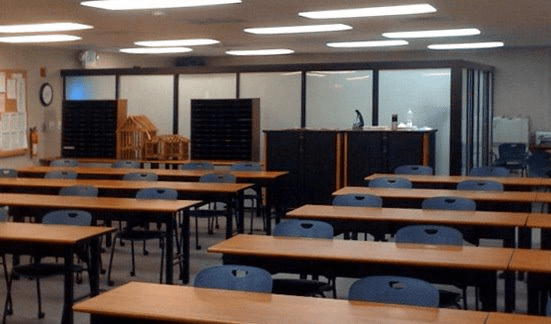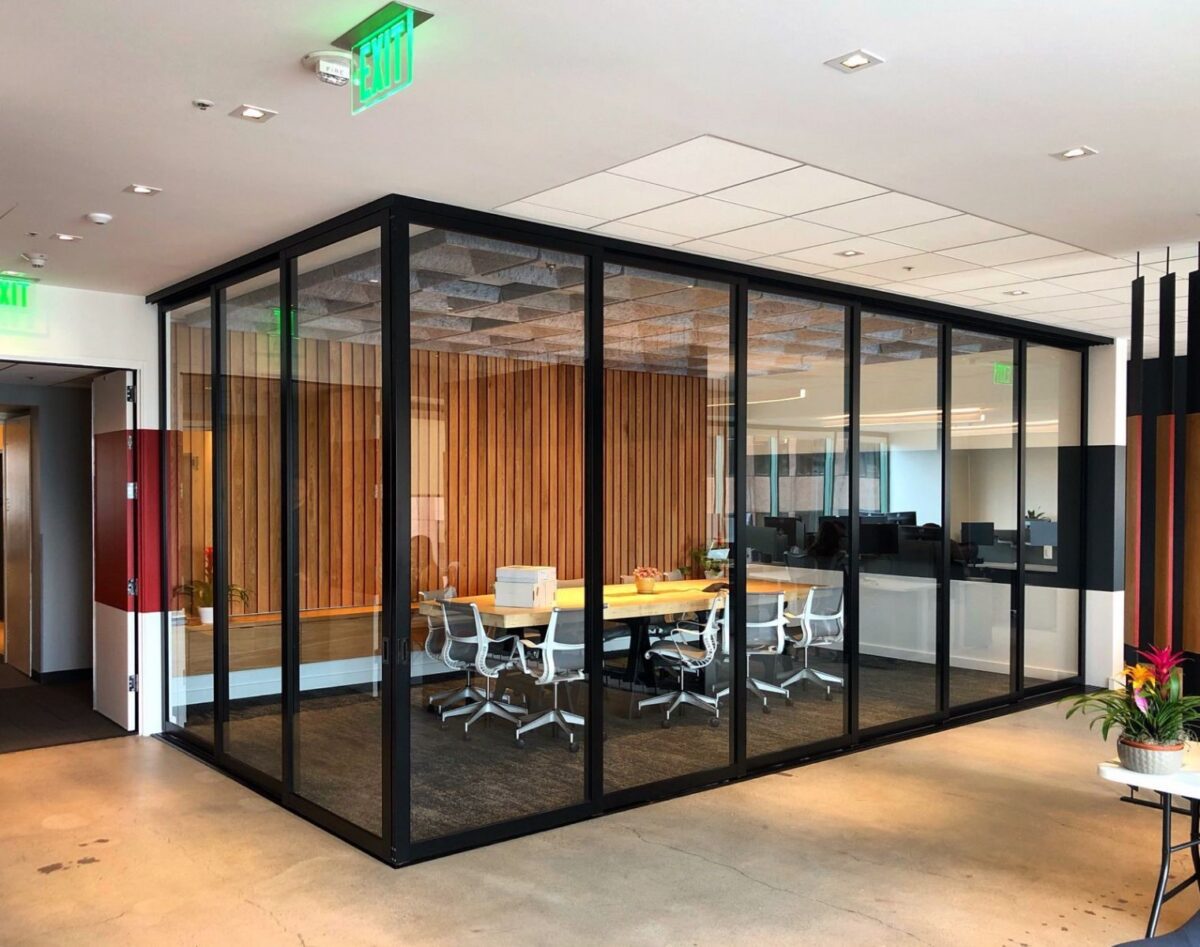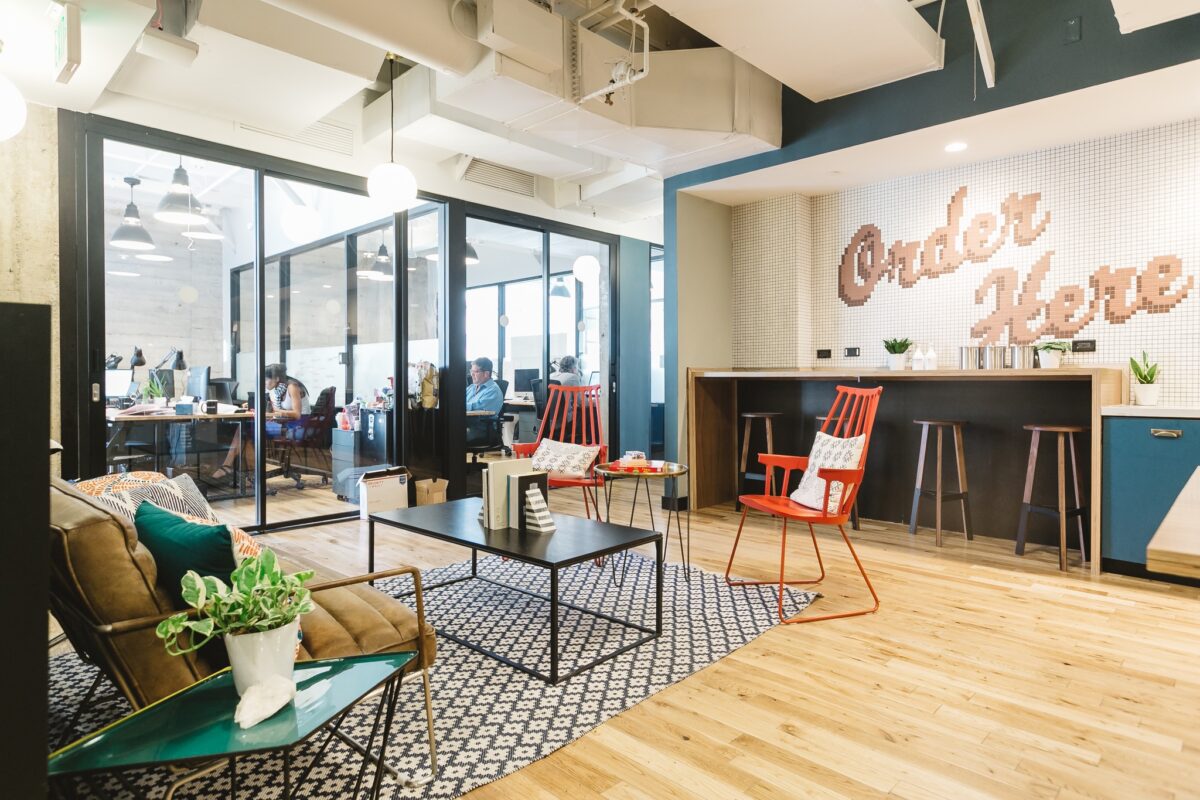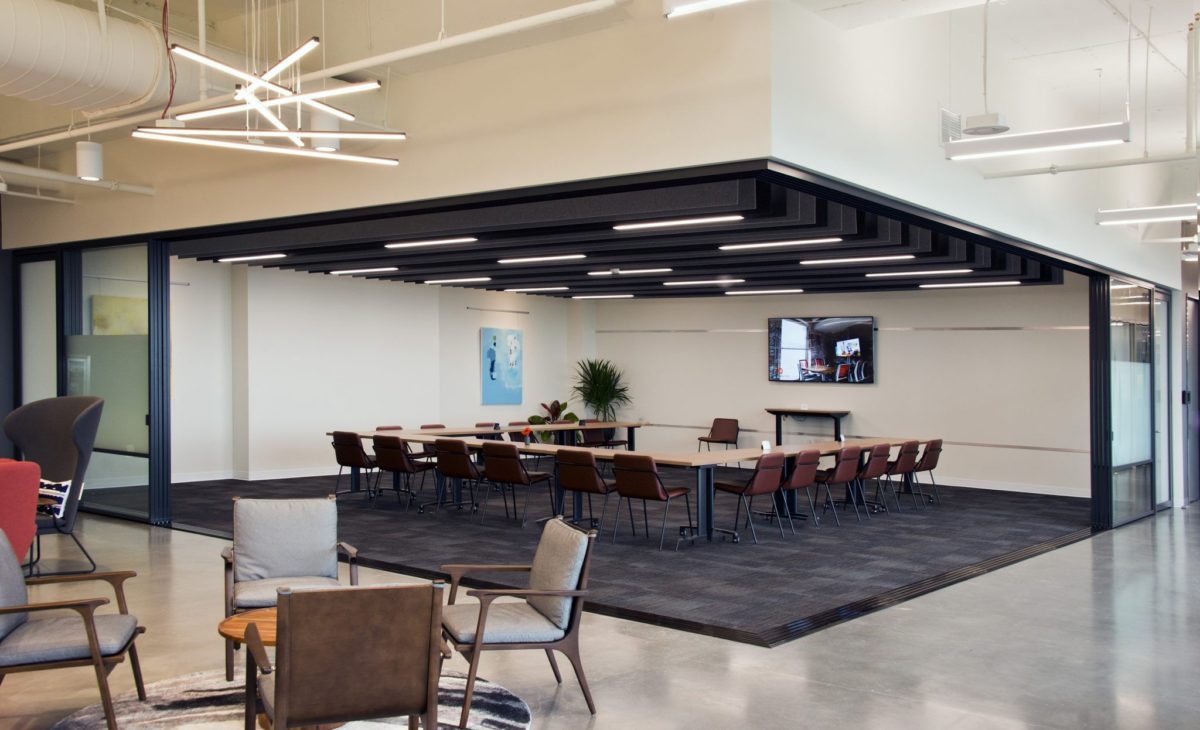College and university campuses are experiencing a design revolution. Where rows of near-identical classrooms and massive lecture halls once dominated college campuses, bright and airy tech-enabled spaces are taking their place today.
Inspired by Silicon Valley, designers and architects are hyper-focused on creating open, collaborative spaces where creative ideas can flow freely—and college campuses are no exception.
The idea is that buildings with open designs create opportunities for productive run-ins. Wide, daylit staircases and hallways encourage students to linger between classes and appointments, increasing the likelihood of unexpected encounters.
Today, movable wall panels and glass partitions allow designers to create dynamic spaces where students can thrive. The panels can be integrated with video screens and whiteboards to further enhance learning and create livelier, more interesting spaces.
As the Founding Dean and Vice Provost at Cornell Tech told the New York Times, “Being in bigger interactive spaces encourages expansive thinking, while being in a box of a room encourages box thinking.”
Flexible Spaces Boost Student Performance
Frank Gehry’s Stata Center at M.I.T. is a good example of the movement for open-space design. The Stata Center replaced M.I.T.’s Building 20, which is famous for the creativity and collaboration it inspired. Gehry’s goal was to recreate that synergetic energy.
Some schools, like York University in Toronto, are restructuring not only their physical spaces to encourage brainstorming and collaboration, but also their curricula. Rather than enduring large lecture courses on basic science in their first year, students of the Lassonde School of Engineering work alone or in small groups on a “passion project” during their freshman year. They learn, tinker, and study in labs, active learning classrooms, and informal lounges equipped with IT-integrated furniture, rather than in traditional classrooms and lecture halls.
Is there merit to the idea that flexible spaces can improve academic performance? At least one study shows there is.
The study looked at 153 schools in the U.K. and found that three elements of classroom design—naturalness, stimulation, and individualization—positively impacted student performance, sometimes dramatically.
Classrooms with plenty of natural light that were also visually stimulating and allowed students to move freely and take ownership over the space improved academic performance in reading, writing, and math by 16 percent.
Here are 7 clever ways colleges and universities can use movable walls, glass partitions, and sliding glass doors to create dynamic spaces for students, faculty, administrators, and visitors.
1: Create separate classrooms.

Student enrollment can change significantly from one semester to the next, creating more demand for classrooms—but remodeling to create additional classrooms isn’t always financially feasible or practical.
Glass dividers with sliding or swinging doors can help you create additional classrooms and make use of a large space more efficiently in higher enrollment years. In lower enrollment years, classrooms with movable walls are a good alternative to lecture halls, which can swallow up a smaller group and take away from student experiences.
2: Construct discrete study compartments.
From single-person cubbies to group study pods, privacy wall panels are ideal for custom-designed study areas. They provide students respite from noise and distractions, and can be as low- or high-tech as needed—with built-in charging stations, flat-screen monitors, and other integrated technology.
3: Section off space in auditoriums.
Whether you need to build VIP seating or a prep area for guest speakers and performers in a large or small auditorium, glass partitions can help you create discrete spaces.
4: Enclose lobbies.
Use movable wall partitions to enclose lobbies and control the flow of human traffic into libraries, performing arts centers, and administration offices. Create separate “booths” as needed—whether it’s an information desk or a check-in/registration area.
5: Establish separate work areas within administration offices.
Open office layouts are extremely popular today, but they have their drawbacks, including reduced privacy and increased noise and distractions. Glass partitions are an ideal solution to quickly and cost-effectively creating private spaces within administration offices.
6: Divide space in libraries and student centers.
Silence is a must in library common areas; use partitions to create separate computer stations or study areas, section off certain areas, and create meeting spaces.
Students need privacy when discussing academics and other potentially sensitive subjects with administrators—glass partitions can help ensure student and visitor privacy.
7: Construct conference rooms.
No need to bring in a construction crew if your campus needs additional conference rooms and meeting spaces. Movable wall partitions are a flexible solution to quickly and affordably create additional conference rooms.
Space Plus: Helping Schools Create Unique Spaces for Learning and Collaboration
The modern university campus needs state-of-the-art solutions, and Space Plus, a division of The Sliding Door Company, provides them.
Space Plus has installed interior door solutions at hundreds of educational facilities, including California State University at Northridge (CSUN), Bay Area Tech School, Compton Unified School District Office, and USC Davis School of Gerontology.
Our glass room dividers and swing doors let light in, while our high-quality materials and sturdy construction ensure student and faculty safety. Sliding glass doors and glass walls offer flexible solutions for colleges, universities, art institutes, music institutes, and many other education centers.
Choose clear or semi-transparent glass, depending on whether you want to maximize privacy or enhance transparency and accountability. Whatever your needs, you can design your own custom doors, and we’ll manufacture them to meet the specifications of each project.
View our gallery for inspiration and learn more about our room divider and sliding glass door solutions for educational environments here.












